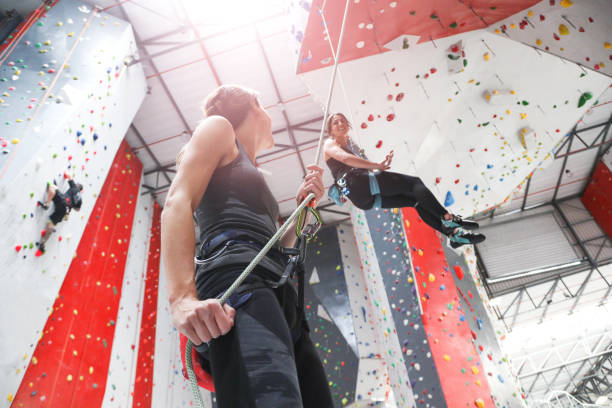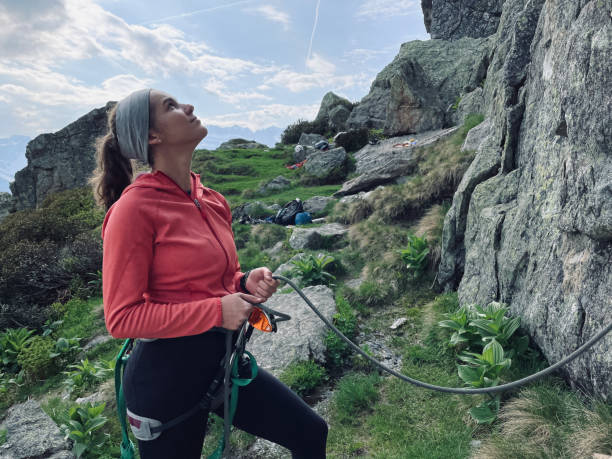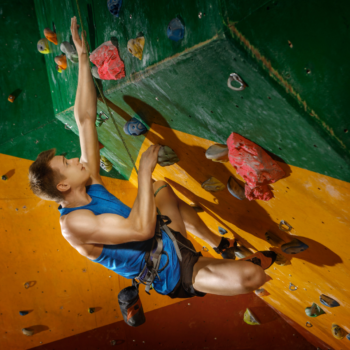Getting Started with Top Roping: A Beginner’s Guide
Table of Contents
What is top roping?
“Top roping” or “top rope” is a popular form of rock climbing that involves climbing with a rope that is anchored to the top of the climb and runs back down to the belayer on the ground. Is top roping safe? Falling is a common concern among climbers, but with this form of climbing, the setup provides a relatively safe way to ascend a wall, as the climber is secured from falls.
Is top roping easy?
It is a great way to get started with climbing and is suitable for climbers of all skill levels. This form of climbing can be considered easier than other disciplines of climbing, such as lead climbing or bouldering, in some ways, but it also depends on the individual’s experience and skill level. The routes can range from easy to difficult, but generally speaking, they are less steep and less technical than lead climbing routes or boulder problems. This means that top roping can be a good way for beginners to learn basic climbing techniques and build strength and confidence before moving on to more challenging climbing styles.
Indoor vs. Outdoor Top Roping
Indoor Top Rope

Indoor top roping is a great way to learn the basics of climbing. Climbing gyms offer a controlled environment, making it a safer and more comfortable place to learn. Here are some things to keep in mind when top roping indoors:
- Equipment: The equipment required for indoor top roping includes a harness, climbing shoes, a helmet, and a rope. Climbing gyms provide their own ropes, but you can also choose to bring your own rope. Gyms typically offer rentals for all other gear necessary for the sport.
- Anchors: In indoor climbing, the anchors are pre-installed at the top of the wall, and the rope is threaded through them. A belayer controls the rope from the ground to ensure that the climber is safe.
- Routes: Climbing gyms offer a variety of routes with a range of difficulty levels. The routes are marked with colored tape, the same colored holds, or tags to indicate the path that the climber should follow.
Outdoor Top Rope
Outdoor top roping is a great way to experience climbing in a natural environment. It requires more gear and skills than its counterpart. Here are some things to keep in mind when top roping outdoors:

- Equipment: The equipment required is the same as indoor climbing, which includes a harness, climbing shoes, a helmet, and a rope. Outdoor climbing also will require you to bring your own anchor gear. This includes webbing, carabiners, and other gear to anchor the rope to the top of the climb.
- Anchors: In outdoor climbing, the anchors are not pre-installed, and the climber must install them. The anchors can be bolts, trees, or other natural features. The rope is threaded through the anchors, and a belayer controls the rope from the ground.
- Routes: Outdoor climbing routes are not marked, and the climber must find the best line to follow. This requires good route-finding skills and the ability to read the rock.
Tips for Top Roping
Interested in trying out this form of rock climbing? Here are some tips to help you get started with top roping:
- Learn proper climbing techniques: This will help you climb more efficiently and reduce the risk of injury. You can take a class, work with a climbing coach, or learn from your fellow climbers about how to improve your technique and develop your skill of climbing.
- Use proper gear: Always use proper gear and make sure it is in good condition. It is important and vital that you check your gear and verify your partner’s gear before each climb. It is extremely dangerous to climb without checking to make sure whether your gear is worn, damaged, or improperly secured.
- Communicate with your belayer: Communication is crucial in climbing. It is important to make sure that you are using proper commands, such as “Belay on,” “Slack,” or “Tension,” to clearly communicate with your belayer about your intentions and movements. For all the commands, check out this link.
- Tip: Review with the belayer the proper commands before climbing to make sure you and your partner communicate effectively during the climb.
- Take breaks: Climbing can be physically demanding, so it’s essential to take breaks to rest and recover. Use ledges or other features to rest and plan your next move(s).
- Stay safe: Climbing can be dangerous, so always prioritize safety. Follow proper safety protocols, use good judgment, and be aware of your surroundings.
Top roping is a fun and accessible form of climbing that can be enjoyed both indoors and outdoors. Whether you are a beginner or an experienced climber, top roping is a great way to challenge yourself and push your limits. With proper gear, technique, and safety precautions, you can enjoy the rewards of climbing while staying safe and having fun. Interested in learning about other forms of rock climbing, check out Types of Rock Climbing: Scaling New Heights.





